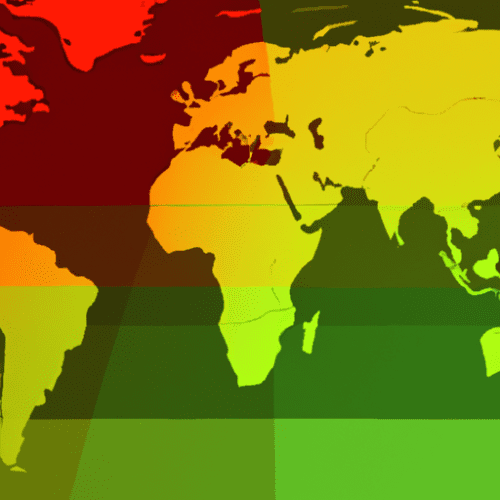
When the world talks about global poverty, data usually guides the conversation: we quote percentages, compare countries, and track progress—or decline—over time. But in some corners of the world, poverty itself is invisible, hidden not because people are not poor, but because gathering the data is almost impossible. Somalia is a stark example.
Somalia, a nation in the Horn of Africa marked by decades of conflict and instability, does not feature in many major global datasets about poverty. Why? Because reliable poverty data is desperately scarce. The true scale and depth of poverty in Somalia remain shrouded in uncertainty, making it difficult for governments, donors, and humanitarian organizations to design effective policies or help those most in need.
In this article, we'll explore why Somalia's poverty is so hard to measure, what the available data suggests, why standard poverty statistics break down here, and how new approaches are trying to shed light on the country's ‘invisible poor.’
The Data Desert: Why Measuring Poverty in Somalia Is So Tough
Decades of Instability Erode the Foundations of Data
Somalia has not had a stable central government since the collapse of Siad Barre's regime in 1991. The country has endured ongoing armed conflict, fragmented administrations, terrorism, and natural disasters. This near-constant instability has crippled the ability to conduct the large-scale household surveys that underpin standard measures of poverty, like the World Bank’s $2.15 a day poverty line or national Household Income and Expenditure Surveys (HIES).
Key Challenges in Somali Poverty Data Collection
- Security Risks: Many regions are unsafe for survey teams, resulting in inaccessible areas and incomplete data.
- Lack of Institutional Capacity: National statistical systems are severely under-resourced, lacking qualified staff and logistics.
- Displacement and Mobility: Conflicts and droughts force millions to move, creating transient and unregistered populations who slip through statistical cracks.
- Fragmented Governance: With multiple regional authorities and no unified data standards, national datasets become a patchwork at best.
All these factors combine to make Somalia one of the world’s most statistically invisible countries, especially when it comes to poverty and related indicators.
The Mirage of Numbers: Existing Poverty Estimates in Somalia
What Do We Know?
While rigorous, nationwide poverty statistics are unavailable, some efforts have been made to estimate poverty levels using innovative surveys and statistical modeling. Here’s what little evidence we do have:
- High Poverty Rates: The World Bank’s 2019 Poverty and Vulnerability Assessment estimated that nearly 69% of Somalis live below the international poverty line ($1.90-a-day at 2011 PPP, likely higher at today's standards).
- Urban, Rural, and Displaced Populations: Rural and internally displaced populations face the highest poverty rates—over 70%, compared with about 60% in urban areas.
- Humanitarian Needs: As of 2023, over 8.3 million Somalis (almost 50% of the population) require humanitarian assistance, driven by conflict, drought, and economic collapse.
- Missing Data on Living Conditions: Detailed consumption, income, nutrition, and education data are largely unavailable. Most numbers are based on rough proxies—like food insecurity and displacement figures—rather than full household surveys.
Even these numbers should be treated with caution—they come from partial surveys (urban-biased, limited reach), administrative data, and modeling. There are huge gaps and significant margins of error.
Where Somalia Stands Compared to Neighbors
Looking at Somalia in the context of East Africa, neighbors like Ethiopia and Kenya publish regular household poverty statistics, showing poverty rates (under $2.15 a day) at around 27% in Kenya and 25% in Ethiopia in recent years. Somalia’s estimated poverty rates—if the rough numbers are accurate—are much higher, among the highest in the world outside of active war zones.
Why Statistical Invisibility Is Dangerous
Invisible Poverty Perpetuates Human Suffering
Reliable data doesn’t just satisfy curiosity—it determines where aid is delivered, how funds are allocated, and which interventions are chosen. Without credible poverty statistics:
- Millions may be left out of aid programs because needs are undercounted or invisible to donors.
- Trends are impossible to track, meaning it’s hard to know if interventions are working, or if poverty is worsening.
- Marginalized groups (displaced people, minority clans, rural women) may be overlooked if they don’t appear in surveys or registers.
- Government planning becomes guesswork, not evidence-based policy.
Somalia’s invisible poor aren’t just unseen by statisticians—they risk being forgotten by the world.
Fresh Approaches: Shining a Light on the Invisible Poor
Harnessing Technology and Partnerships
Despite the obstacles, efforts to find new ways to measure poverty in Somalia are gaining momentum. Here are some promising directions:
- High-Frequency Phone Surveys: Conducted by the World Bank and Somali National Bureau of Statistics, these gather snapshots on income, food security, and well-being despite limited coverage.
- Satellite Imagery and Geospatial Analysis: Researchers increasingly use night-time lights, crop patterns, and settlement mapping to estimate poverty at the community level, even where survey teams cannot go.
- Mobile Money and Big Data: Nearly 73% of Somali adults use mobile money services. Transaction data, when anonymized and aggregated, can serve as a proxy for economic activity and consumption patterns.
- Community-Based Monitoring: Local organizations and humanitarian groups mobilize communities to self-report needs and monitor service delivery, bypassing formal surveys.
While none of these fully replace traditional surveys, together they offer new hope for filling information gaps and putting numbers behind the faces of Somalia’s poorest.
Conclusion: Counting the Uncounted—A Moral And Statistical Imperative
Somalia’s invisible poor represent one of the greatest statistical and humanitarian blind spots of our time. The absence of reliable poverty data is both a symptom and driver of chronic suffering. Without seeing and counting those most in need, the world cannot respond effectively, and the dream of eradicating extreme poverty will remain out of reach.
As we push for global development agendas—like the Sustainable Development Goals (SDGs)—it is critical to invest in better poverty measurement for the world’s most data-dark countries. Technology, innovation, and local partnerships are beginning to break the silence—but far more support is needed to truly “leave no one behind.”
Until then, behind the statistics and uncertainties, millions of Somalis remain unseen, uncounted, and unheard. Making them visible—statistically and politically—is the first step to changing their stories.
Explore more: For statistics on poverty by country and the latest global data, browse our country statistics page.








